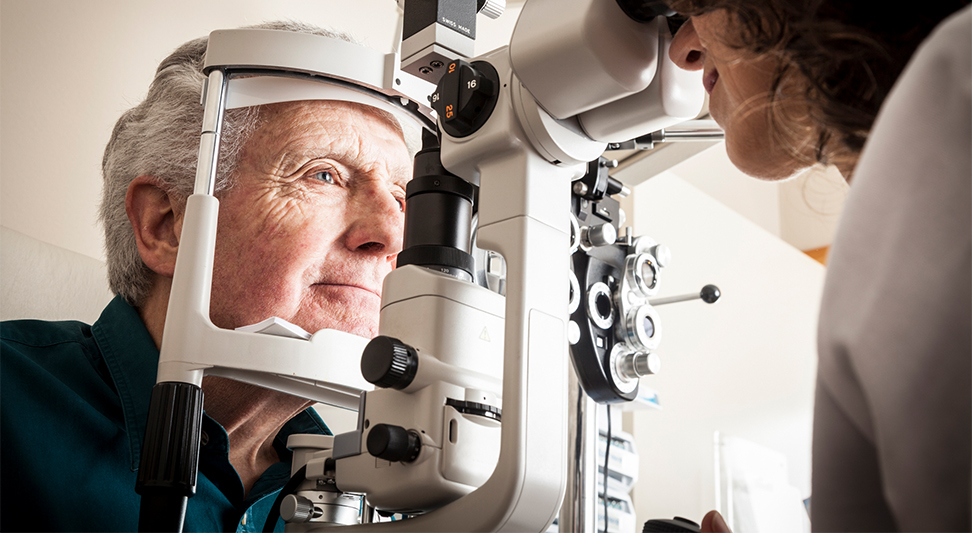Healthy Aging Month is an annual, national observance not only with regards to the health and well-being of seniors, but also to consider the benefits of aging.
That last part may be a surprise to you, but yes, there are positive aspects of growing older!
Apart from potential discounts, retirement, and grandchildren, wisdom and time tend to make us more comfortable with ourselves. In fact, many surveys and studies show that seniors form one of the happiest groups of people in the world. Now is the time to take charge of your health and enjoy opportunities that present themselves.
History of Healthy Aging Month
More than 25 years ago, Healthy Aging Month began as a means to draw national attention to the health and wellbeing of seniors and to encourage adults aged 45+ to improve their physical, mental, social — even financial — health. Local Healthy Aging Month events were encouraged and promoted, such as the annual Healthy Aging Symposium. This year, Trust for America’s Health and the ODPHP took to Twitter to share information and insights during the virtual event with the hashtag #HealthyAging2021.
This year, in conjunction with the National Eye Health Education Program (NEHEP), there is also a focus on vision and eye health in seniors. After all, vision is a vital part of everyday life for people, and many start to experience changes in their vision after the age of 40.
Most Common Vision and Eye Problems Associated with Aging
While the following eye issues affect people of all ages, they tend to be experienced most frequently by the elderly:
- Dry Eye. This happens when the lacrimal glands that produce tears stop working well, resulting in eyes feeling dry and uncomfortable. Dry Eye can often be relieved through eye drops — and if particularly bad, you can undergo a procedure that will partially plug the tear ducts so tears don’t drain so fast.
- Age-Related Macular Degeneration (AMD). As people age, sometimes a part of the retina called the Macula deteriorates, resulting in macular holes that affect the central vision. You may notice spots where letters in words are hard to make out, for example, making reading, driving, and other common tasks more difficult. AMD can be treated with laser surgery on the macula. It can be exacerbated by high blood pressure.
- Glaucoma. Since fluid fills the eye, pressure may develop and lead to glaucoma. Over time, glaucoma can damage the optic nerve, and even result in vision loss. The scary part is that there are often no symptoms at the beginning stages of the disease. Eventually, you may notice fluctuations in your vision and experience problems with your peripheral vision. Treatment options include eye drops, laser treatment, and surgery. It can be exacerbated by high blood pressure.
- Cataracts. When protein molecules in the lens clump, a cloudy spot appears. This is a cataract, and it can be removed through a common surgical procedure when it starts to interfere with your vision.
- Retinal Detachment. This is when the layers of the retina detach from the tissue, causing you to see “floaters” in your eyes, straight lines looking curvy, light flashes, or if a curtain has been pulled over part of your field of vision. The retina can be reattached through laser treatment or surgery.
- Presbyopia. Most people begin to experience some loss in visual acuity in their 40s and beyond as the lens inside their eyes becomes less flexible. This condition, Presbyopia, results in increasing difficulty focusing on things up close. Many people who have never had to wear glasses find themselves needing reading glasses, and already bespectacled people may start needing bifocals.
- Diabetic Retinopathy. Diabetes can cause tiny blood vessels in the retina to leak and lead to various vision problems. Treatment includes laser surgery or a vitrectomy (a surgical process). It can be exacerbated by high blood pressure.

Connection Between Overall Health and Eye Health
It may come as a surprise to many people that your level of overall health can have a huge impact on your vision and eye health — especially as you age. You have likely heard about some of the common health problems, apart from vision issues, that are more likely to arise in seniors, such as:
- Joint pain
- Decreased flexibility and balance
- Lower bone density
- Increased risk of high blood pressure and other cardiovascular problems
- Bladder and gastrointestinal issues
- Diabetes and other diseases
That is why it is important to maintain healthy eating and lifestyle habits as you grow older. The bonus is that as you work on these health issues, your eye health benefits. Let’s look at diabetes as an example.
When someone has diabetes, their body cannot properly produce or use insulin to regulate the glucose in the blood. This can wreak havoc with a number of body parts and organs, including the eyes. Poor blood sugar control can lead to distortion of the shape of the lens and damage to the small blood vessels in the eye, causing, among other conditions, diabetic retinopathy.
Meanwhile, there are a number of conditions not specific to the eyes that can be caught or confirmed with an eye exam, such as:
- Brain Tumor — Increased pressure to the eye and swelling causing changes to the optic nerve can be seen.
- Cancer — Signs of skin, blood, or tissue cancers can be seen during a detailed eye exam, as they may affect the eyelid and the eye’s outer surface.
- Cholesterol — High cholesterol may cause a yellow or blue ring around the cornea and deposits in retinal blood vessels.
- Diabetes — Damage to tiny retinal blood vessels leading to yellow fluid buildup can point to diabetic retinopathy, which can occur even before someone is diagnosed with diabetes.
Lupus, Lyme disease, medication toxicity, multiple sclerosis, rheumatoid arthritis, Parkinson’s disease, thyroid disease, and even STDs are among the many conditions that may be detected during a comprehensive eye exam.
Staying Healthy When You’re Aging
Many of the routines you should follow to maintain your overall physical health also help prevent eye diseases.
Staving off diabetes, of course, reduces your risk of developing diabetes-related ocular problems and minimizes the effects if you do already suffer from them. In general, a good diet and healthy lifestyle can improve eye health by counteracting the oxidative damage that tends to lead to eye disease.
As you age, it becomes even more important to:
- Eat healthful foods, with lots of dark, leafy greens such as kale, collard greens, and spinach. Foods that are high in omega-3 fatty acids, like salmon, halibut, and tuna, as well as foods with vitamin A and beta carotene, like carrots, are also beneficial to eye health.
- Exercise. Regular physical activity lowers the risk of a number of health conditions that can result in eye health issues, like diabetes and high blood pressure. But it also helps prevent ocular diseases themselves, according to preliminary studies.
- Stop smoking. Not only is smoking horrible for the lungs and increases your risk for cancer generally, but the smoke can harm the optic nerve.

See Your Optometrist Regularly
Early action is almost always the best way to deal with any disease or disorder. The same goes for vision issues.
An annual check-up usually involves a routine eye test to assess vision, but a comprehensive eye exam performed by an optometrist is essential. In addition to assessing vision, optometrists are able to recognize signs of anything wrong in your eyes, which may also signal something wrong elsewhere in the body.
It is especially important for diabetics to get checked regularly, as they are more at risk for a number of eye diseases. Don’t just wait until you experience signs of vision loss to see your optometrist.
Your eye doctor is also the best person to ask about new treatments and procedures used to treat age-related vision problems, including:
Laser Cataract Surgery
Laser cataract surgery uses the same femtosecond laser technology as LASIK to safely remove the cloudy lens from the eye and replace it with a specialized intraocular lens (IOL).
nJoy Vision was the first laser vision correction center in Oklahoma to perform laser cataract surgery using the CATALYS® Precision Laser System. CATALYS incorporates 3D imaging with a highly precise laser system that softens and breaks up the cataract for quick and easy removal. It is a gentler, faster procedure that causes little or no discomfort.
Refractive Lens Exchange (RLE)
An alternative to LASIK, RLE replaces the natural lens of the eye with an IOL. RLE can correct high degrees of near- and farsightedness without changing the thickness or shape of the cornea.
With RLE, there is no risk of vision regression. And with multifocal IOLs, you can also correct presbyopia and forgo the need for reading glasses.
Look Your Age In the Eyes
At nJoy Vision, we believe overall health should be a priority and that age is always worth celebrating.
As the years stack up, the healthy habits and lifestyle choices you make today will pay dividends. So, if you haven’t looked your age in the eyes lately, Healthy Aging Month is the perfect time to schedule a comprehensive eye exam.
If you need help finding a doctor of optometry that will perform a comprehensive examination of your eyes and eye health, check out our network of preferred physicians for a list of qualified and experienced optometrists in your area.

